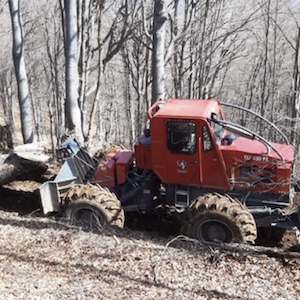Productivity analysis and costs of wheel cable skidder during salvage logging in European beech stand

Published: 1 August 2023
Abstract Views: 665
PDF: 281
HTML: 84
HTML: 84
Publisher's note
All claims expressed in this article are solely those of the authors and do not necessarily represent those of their affiliated organizations, or those of the publisher, the editors and the reviewers. Any product that may be evaluated in this article or claim that may be made by its manufacturer is not guaranteed or endorsed by the publisher.
All claims expressed in this article are solely those of the authors and do not necessarily represent those of their affiliated organizations, or those of the publisher, the editors and the reviewers. Any product that may be evaluated in this article or claim that may be made by its manufacturer is not guaranteed or endorsed by the publisher.
Similar Articles
- Chantal Erbino, Alessandro Toccolini, Ilda Vagge, Paolo Stefano Ferrario, Guidelines for the design of a healing garden for the rehabilitation of psychiatric patients , Journal of Agricultural Engineering: Vol. 46 No. 2 (2015)
- Fuhao Zhu, Jin Chen, Zhuohuai Guan, Yahui Zhu, Hao Shi, Kai Cheng, Development of a combined harvester navigation control system based on visual simultaneous localization and mapping-inertial guidance fusion , Journal of Agricultural Engineering: Vol. 55 No. 3 (2024)
- Alessandro Biglia, Paolo Barge, Cristina Tortia, Lorenzo Comba, Davide Ricauda Aimonino, Paolo Gay, Artificial intelligence to boost traceability systems for fraud prevention in the meat industry , Journal of Agricultural Engineering: Vol. 53 No. 4 (2022)
- Aldo Calcante, Francesco M. Tangorra, Measuring oxygen saturation and pulse rate in dairy cows before and after machine milking using a low-cost pulse oximeter , Journal of Agricultural Engineering: Vol. 52 No. 2 (2021)
- Claudio Caprara, Fabio Pezzi, Effect of different winter pruning systems on grapes produced , Journal of Agricultural Engineering: Vol. 44 No. s2 (2013): Proceedings of the 10th Conference of the Italian Society of Agricultural Engineering
- Roberto Fanigliulo, Marcello Biocca, Daniele Pochi, Effects of six primary tillage implements on energy inputs and residue cover in Central Italy , Journal of Agricultural Engineering: Vol. 47 No. 3 (2016)
- Salvatore Faugno, Stefania Pindozzi, Roberta Infascelli, Collins Okello, Maria Nicolina Ripa, Lorenzo Boccia, Assessment of nitrogen content in buffalo manure and land application costs , Journal of Agricultural Engineering: Vol. 43 No. 2 (2012)
- Qingyu Chen, Rui Kang, Naishuo Wei, Yunlei Fan, Zeyu Wang, Yu Chen, Jun Chen, Design and experiment optimize of the vibration harvesting machine of Lycium barbarum L. , Journal of Agricultural Engineering: Early Access
- Gennaro Giametta, Bruno Bernardi, MECHANIZED HARVESTING TESTS PERFORMED BY GRAPE HARVESTERS IN SUPER INTENSIVE OLIVE ORCHARD CULTIVATION IN SPAIN , Journal of Agricultural Engineering: Vol. 40 No. 2 (2009)
- Francesco Barreca, Pasquale Praticò, Giuseppe Davide Cardinali, A low-energy storage container for food and agriculture products , Journal of Agricultural Engineering: Vol. 52 No. 3 (2021)
<< < 21 22 23 24 25 26 27 28 29 30 > >>
You may also start an advanced similarity search for this article.

 https://doi.org/10.4081/jae.2023.1419
https://doi.org/10.4081/jae.2023.1419







